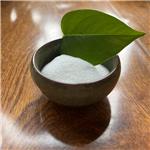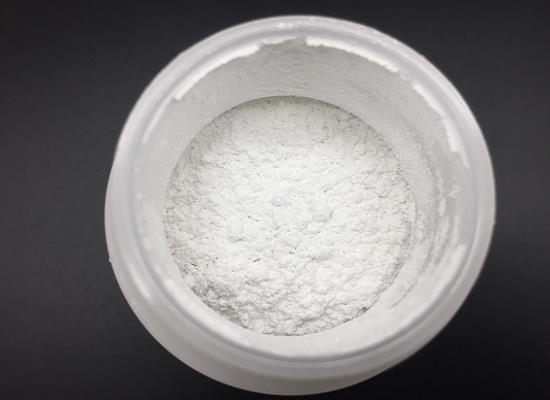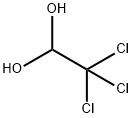What is Chloral hydrate?
Oct 7,2023
Description
Chloral hydrate was first synthesized by the chemist Justus von Liebig in 1832 at the University of Giessen. This molecule was discovered by Liebig when a chlorination (halogenation) reaction was performed on ethanol. Chloral hydrate is one of the oldest known synthetic agents and has been used as a hypnotic and sedative agent since the 1800s. It is one of the most frequently used sedative agents in pediatric echocardiography, CT, MRI imaging, and so on.

Effects on cells
This compound is the major oxidative metabolite of trichloroethylene (TCE) and can cause TCE to induce hypersensitivity. Researchers have found that chloral hydrate (CH) displayed significant stimulation of THP-1 cell activation, including CD54 and CD86 expression, IL-8 release, and cell migration, and damaged the redox balance by triggering ROS generation, GSH consumption, and antioxidase activity modulation. Antioxidant pretreatment with curcumin dramatically reduced cell activation and oxidative stress triggered by CH in THP-1 cells[1]. Chloral Hydrate is a hypnotic and sedative with CNS depressant properties similar to barbiturates. The mechanism of action of the drug is not completely known, however the CNS depressant effects of Chloral Hydrate are believed to be mainly due to the active metabolite trichloroethanol.
Suitable Alternative to Chloral Hydrate
The chief manifestations of toxicity are due to central nervous system depressant action and its arrhythmogenic potential. CH should be properly monitored and managed by appropriately trained personnel due to the risk of respiratory depression and hypoxia, and the use of CH often results in many undesirable side effects, including vomiting, inconsistent sedative effects, and longer periods of sleepiness. Chloral hydrate was banned in Italy and France, in consideration of evidence of its carcinogenicity and genotoxicity. Dexmedetomidine is a sedative with unique properties that have been increasingly used for procedural sedation in children. Dexmedetomidine’s impact on respiratory drive and airway patency and tone is much less when compared to the majority of other sedative agents. Hence, some research considers that intranasal dexmedetomidine could be a suitable alternative to chloral hydrate. However, considering the possibility of bradycardia, Dex should be used with caution[2-3].
References
[1] Zhao J, et al. Nrf2 regulates the activation of THP-1 cells induced by chloral hydrate. Ecotoxicology and Environmental Safety, 2023; 9256: 114841.
[2] Lian X, et al. Comparison of dexmedetomidine with chloral hydrate as sedatives for pediatric patients. Medicine, 2020; 99.
[3] Cozzi G, et al. Intranasal Dexmedetomidine for Procedural Sedation in Children, a Suitable Alternative to Chloral Hydrate. Pediatric Drugs, 2017; 19: 107–111.
- Related articles
- Related Qustion
- Chloral Hydrate: Applications as Aedative Agent for Neurodiagnostic Procedures and its Dosage Dec 17, 2024
Chloral hydrate, effective for pediatric sedation, poses risks like desaturation and vomiting but offers benefits such as lower cardiovascular risks.
- Safety and Efficacy of Chloral Hydrate in Outpatient Pediatrics for Sedation Jan 17, 2024
Chloral hydrate is a clinical sedative drug used for the short-term treatment of insomnia and to relieve anxiety and induce sleep prior to surgery.
- Chloral hydrate:a sedative-hypnotic drug Dec 21, 2023
Chloral hydrate, covering its introduction, historical applications, recent developments, synthesis,and safety considerations.
Leuprorelin is a parenterally administered medication with high bioavailability, used for various clinical applications and associated with changes in sex hormone levels.....
Oct 7,2023API3-Amino-2-chloro-4-methylpyridine is a key intermediate in the production of nevirapine with various synthesis methods.....
Oct 7,2023Pharmaceutical intermediatesChloral hydrate
302-17-0You may like
- Chloral hydrate
-

- $0.00 / 1kg
- 2025-04-21
- CAS:302-17-0
- Min. Order: 1kg
- Purity: 99%
- Supply Ability: 1000
- Chloral hydrate
-

- $120.00 / 1kg
- 2025-04-21
- CAS:302-17-0
- Min. Order: 1kg
- Purity: 98%
- Supply Ability: 1000
- Chloral hydrate
-

- $6.00 / 1kg
- 2025-04-21
- CAS:302-17-0
- Min. Order: 1kg
- Purity: 0.99
- Supply Ability: 10000






